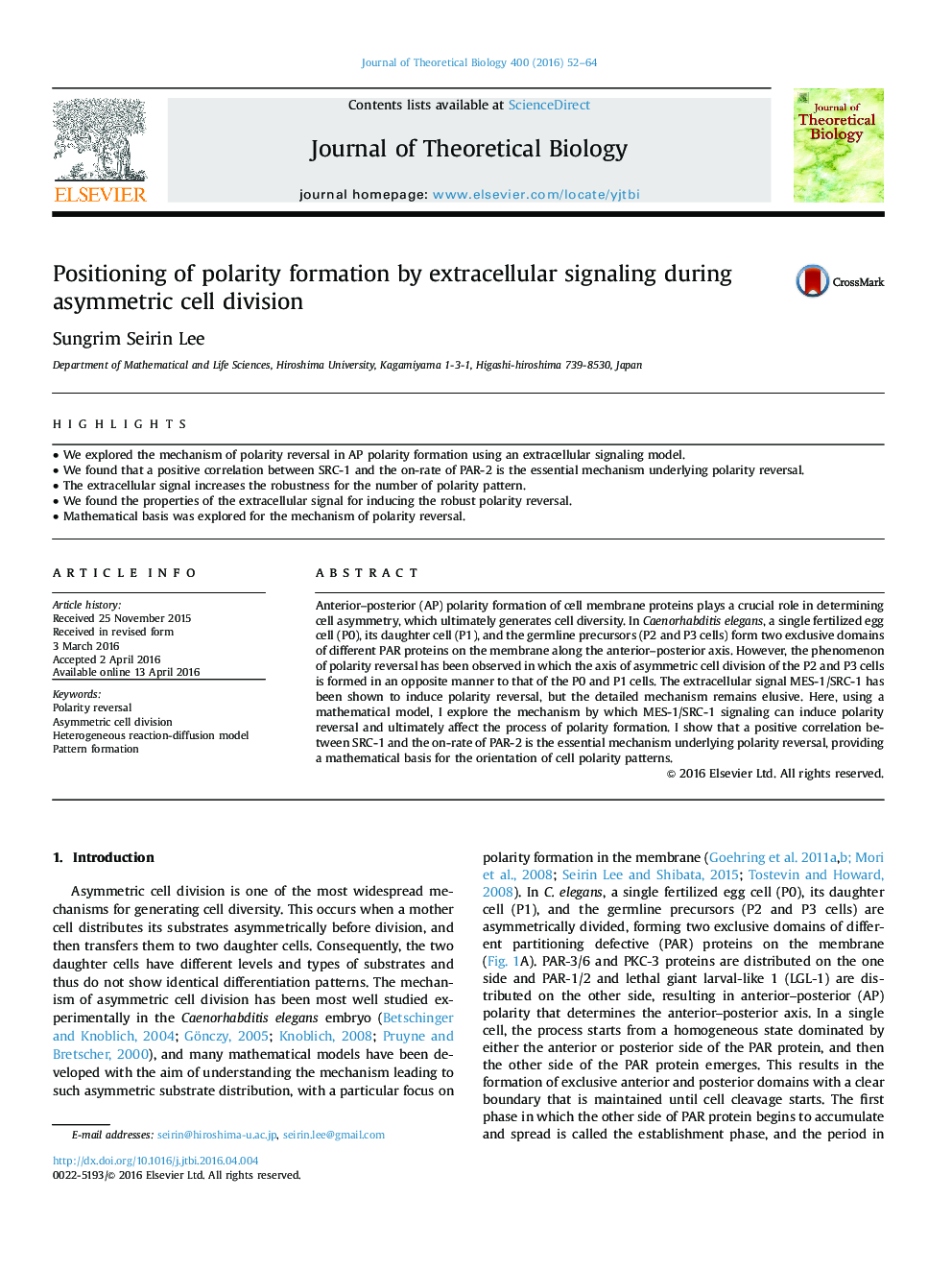| Article ID | Journal | Published Year | Pages | File Type |
|---|---|---|---|---|
| 6369197 | Journal of Theoretical Biology | 2016 | 13 Pages |
Abstract
Anterior-posterior (AP) polarity formation of cell membrane proteins plays a crucial role in determining cell asymmetry, which ultimately generates cell diversity. In Caenorhabditis elegans, a single fertilized egg cell (P0), its daughter cell (P1), and the germline precursors (P2 and P3 cells) form two exclusive domains of different PAR proteins on the membrane along the anterior-posterior axis. However, the phenomenon of polarity reversal has been observed in which the axis of asymmetric cell division of the P2 and P3 cells is formed in an opposite manner to that of the P0 and P1 cells. The extracellular signal MES-1/SRC-1 has been shown to induce polarity reversal, but the detailed mechanism remains elusive. Here, using a mathematical model, I explore the mechanism by which MES-1/SRC-1 signaling can induce polarity reversal and ultimately affect the process of polarity formation. I show that a positive correlation between SRC-1 and the on-rate of PAR-2 is the essential mechanism underlying polarity reversal, providing a mathematical basis for the orientation of cell polarity patterns.
Related Topics
Life Sciences
Agricultural and Biological Sciences
Agricultural and Biological Sciences (General)
Authors
Sungrim Seirin Lee,
